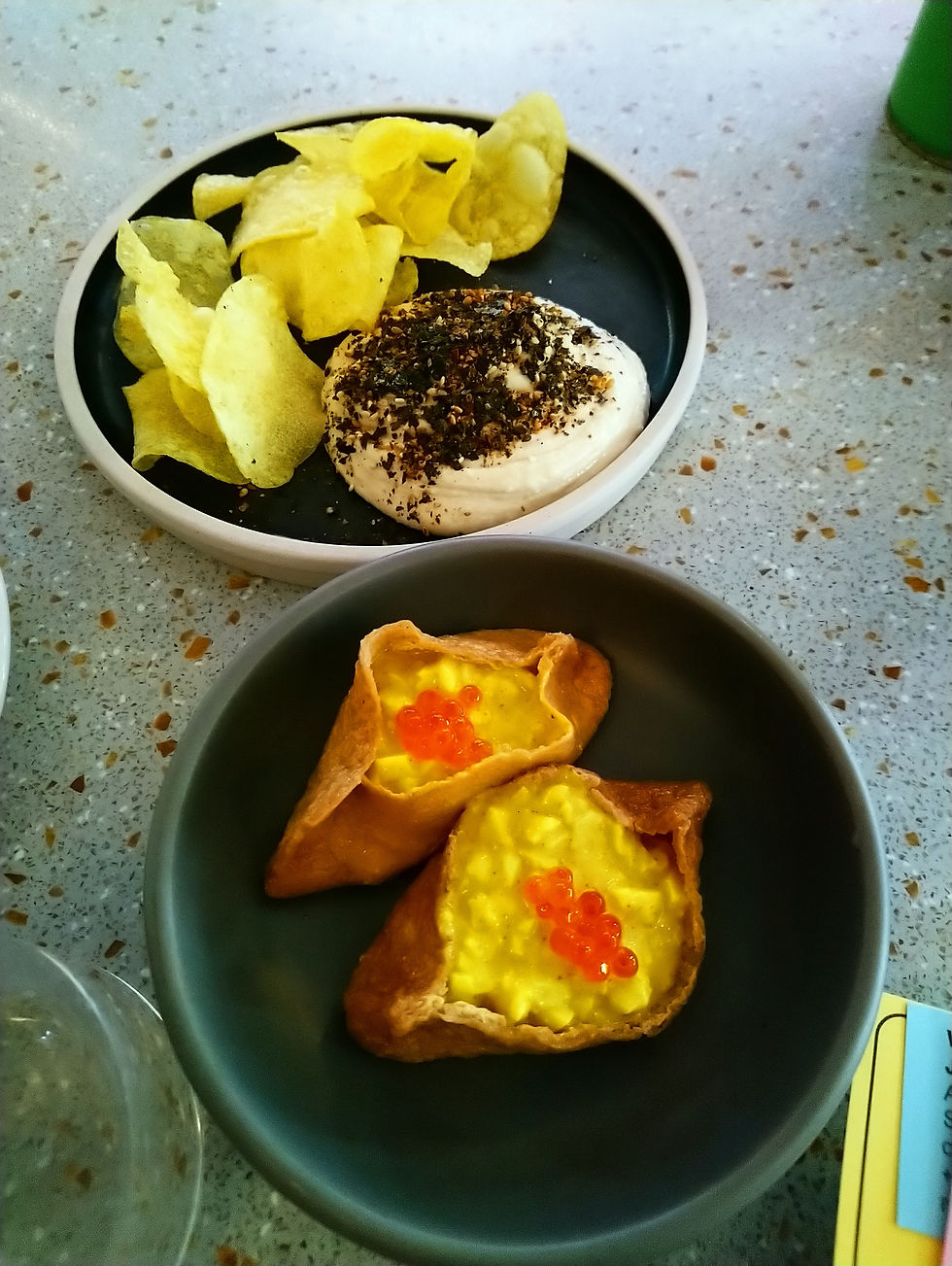Cooking on Water
- Lottie

- Mar 27, 2023
- 4 min read
It was a very frosty March evening when I stepped aboard Sean’s boat. He had wanted to ensure it was toasty warm for my arrival, so had delayed our meeting by half an hour. In that time I went to pick us up some hot falafel wraps from a bustling Lebanese restaurant nearby. I was meeting Sean in the Westbourne Park area of London but he had travelled from further out West where he had spent a considerable amount of time moored on the canals in Hillingdon when he had a job nearby. This constant movement from one mooring to another, is not unusual in London, where permanent moorings are hard to come by and ‘continuous cruising’ licenses are the norm. For this reason, many of the boats you see on the canals of Hillingdon are only transient residents.
Being a boater myself, I always find it fascinating visiting other people’s boats to see how they make home of their floating vessels. Stepping onto Sean’s boat, it immediately started rocking, it being a narrowboat and easily tipped by the weight of one extra person. I stepped down into the main body of the boat and a warm hug of air embraced my frozen fingers. Walking through the bedroom and past a small closet bathroom you get to the heart of the boat: the kitchen/ living space where a kettle was warming on the stove. Heating a kettle on the stove is common practice amongst many boaters in the winter months. As all continuous cruising boats exist off grid, with no electric or gas hook up, these utilities are scarce and precious. So, using the heat from the boat to boil the water for your cup of tea makes sense. Running out of gas can mean waiting days for a fuel boat to pass by to restock.
In Benjamin Bowles’ research into London’s boating community, he identifies a “soupy” time that boaters live by, an elastic time where, in the words of one boater, things “happen when they happen”i. Bowles explains that much of this can be attributed to the fact that boaters are often at the whims of the surrounding material environment, only being able to move when weather conditions are favourable. Waiting for a mug of hot peppermint tea in Sean’s boat, I sensed how this idea of soupy time extended to cooking and eating practices on boats too. With gas and electricity at a scarcity, we had to wait for the wooden fuel within his stove to reach a temperature for the kettle to boil; a process that took a considerable amount longer than flicking the switch of an electric kettle.
The physicality of the boat didn’t just influence how long it took to make a cuppa either. This also extended to the meals Sean made, who favoured one pot wonders because of lack of space and the finite amount of water in his water tank he used to wash up with. His favourite go-to meals were either dhal or risotto. Dhal was the first dish he made independently at university and has become more elaborate with time with the addition of more spices and vegetables. He likes to make his risotto with butternut squash which he adds broccoli to at the end of cooking so as not to overcook it. In the past, he would put tofu on the top of his risotto when he was in his self-proclaimed, amusingly named, “proteinfiendation” stage.
I noticed that Sean’s fridge was open ajar on the latch. He explained to me that it was a special feature that allowed air to circulate through the fridge during winter when he turns his fridge off as the solar panels are unable to produce sufficient power. Having my own problems with keeping things fresh without a fridge, I asked Sean whether he had become more blasé about mould since being a boater. Surprisingly, he said he didn’t have issues with mouldy food in his boat. The reason, he explained, was his tiny kitchen didn’t have enough cupboards to store dry goods even if he wanted to. Therefore, he made sure to buy little and often, eating stuff before it could spoil (although he did confess that his dhal could get a bit funky on day 3 of being left out).
Many anthropologists have tried to answer the questions: why do we eat what we eat and why do we cook how we cook? Materialists would argue that it is primarily the constraints of our surrounding environment and resources which decide this. It is hard to argue against this in Sean’s example. How he shopped, stored, cooked, and ate the food in his boat was very much influenced by and, at times determined by, the physicality of his boat. Of course, reasons for cooking and eating practices are often more nuanced and less practical than this: he had his own ethical reasons for being a “flexitarian”, for example. However, you could argue that the material constraints of boat living may have more sway on boaters’ cooking and eating practices when compared to their land-dwelling neighbours.




Comments